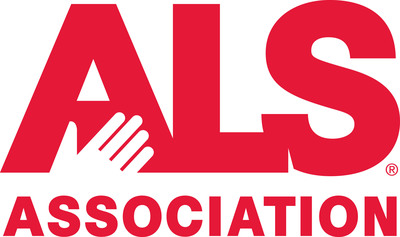Two New Studies Supported By The ALS Association Highlight Discovery Around Most Common ALS Gene Mutation
WASHINGTON, Aug. 26, 2015 /PRNewswire-USNewswire/ -- In today's issue of Nature, two new studies funded in part by The ALS Association both highlight an important new discovery around the C9orf72 mutation, the most common genetic defect associated with amyotrophic lateral sclerosis (ALS). Both studies emphasize that a key driver of the development of ALS due to this mutation is an export-import imbalance between the cell's nucleus and its non-nuclear portion, or cytoplasm.

ALS is a progressive neurodegenerative disease that affects nerve cells in the brain and the spinal cord. Eventually, people with ALS lose the ability to initiate and control muscle movement, which often leads to total paralysis and death within two to five years of diagnosis. For unknown reasons, veterans are twice as likely to develop ALS as the general population. There is no cure, and only one drug approved by the U.S. Food and Drug Administration (FDA) modestly extends survival.
"These new studies help us further understand a significant pathway in the ALS disease process and strengthens the evidence that RNA mishandling is a major contributor to ALS even beyond the genetic cases of ALS believed to be caused by the C9orf72 mutation," said Lucie Bruijn, Ph.D., M.B.A., and Chief Scientist for the Association. "Importantly, this discovery may provide us with strong candidates for future drug development," she continued.
In the first study, scientists have discovered that one major consequence of the C9orf72 gene mutation is disruption of RNA export from the cell nucleus. Working in fruit flies carrying various forms of the mutation, the researchers discovered 18 genes that worked to either worsen or mitigate the effects of the mutation. All 18 encoded either components of the nuclear pore or other proteins involved in regulating traffic of RNA and proteins in and out of the cell nucleus. One consequence was an increase in the amount of RNA retained in the nucleus, a change that was also seen in cells derived from people with disease due to the C9orf72 mutation.
The work was performed by first authors Brian Freibaum, Ph.D., of St. Jude's Children's Research Hospital in Memphis, Tennessee, and Yubing Lu, Ph.D., of University of Massachusetts Medical Center in Worcester; and led by J. Paul Taylor, M.D., Ph.D., of St. Jude's, and Fen-Biao Gao, Ph.D. of University of Mass. Dr. Gao was supported by The ALS Association's Greater Chicago Chapter State of Illinois Grant.
"C9ORF72 mutations are by far the most common genetic defect associated with both ALS and FTD, so understanding how the mutation causes disease is tremendously important for efforts to develop therapies to stop or reverse the death of neurons in the brain and spinal cord of patients," said co-corresponding author Dr. Taylor.
In the second study, researchers at Johns Hopkins University showed that the expanded RNA of the C9orf72 mutation interacts directly with a protein called RanGAP1, which controls traffic of materials across the membrane separating the nucleus from the cytoplasm in all cells, including the motor neurons affected in ALS. That interaction appears to interrupt the normal regulation of cross-membrane flow of materials. The trafficking defect was seen in both a fly model of the disease and in cells from people with ALS. The defect could be mitigated with treatments that targeted the extra RNA produced by the mutation.
The work was performed by co-first authors Ke Zhang, Ph.D., a recipient of the Milton Safenowitz Post-doctoral in 2014, and Christopher Donnelly, Ph.D., and senior authors and Association-supported scientists Rita Sattler, Ph.D., Thomas Lloyd, M.D., Ph.D., and Jeffrey Rothstein, M.D., Ph.D., all of Johns Hopkins University in Baltimore, Maryland. Dr. Ke Zhang-supported by Greater Philadelphia Chapter of The ALS Association.
"These exciting results focus our attention more strongly on the role of cross-membrane trafficking in understanding how the C9orf72 gene causes ALS," according to Lucie Bruijn, Ph.D., M.B.A., Chief Scientist for The ALS Association. "The ability of experimental treatments to reverse these effects in this model also gives us more reason to hope that a similar approach may offer benefits in people with ALS. This study and the recent report by a second group also showing defects in nuclear transport provide a stronger basis for developing therapy to target this important pathway."
As referenced above, Dr. Donnelly is a recipient of The ALS Association's Milton Safenowitz Post-Doctoral Fellowships for ALS Research, which encourages and facilitates promising young scientists to enter the ALS field. Funding for this two-year research award is made possible by the generosity of the Safenowitz family through the Greater New York Chapter of The ALS Association and is in memory of Mr. Safenowitz, who died of ALS in 1998.
About The ALS Association
The ALS Association is the only national non-profit organization fighting Lou Gehrig's Disease on every front. By leading the way in global research, providing assistance for people with ALS through a nationwide network of chapters, coordinating multidisciplinary care through certified clinical care centers, and fostering government partnerships, The Association builds hope and enhances quality of life while aggressively searching for new treatments and a cure. For more information about The ALS Association, visit our website at www.alsa.org.
Logo - http://photos.prnewswire.com/prnh/20131211/MM32178LOGO
To view the original version on PR Newswire, visit:http://www.prnewswire.com/news-releases/two-new-studies-supported-by-the-als-association-highlight-discovery-around-most-common-als-gene-mutation-300133640.html
SOURCE The ALS Association
 Help employers find you! Check out all the jobs and post your resume.
Help employers find you! Check out all the jobs and post your resume.
